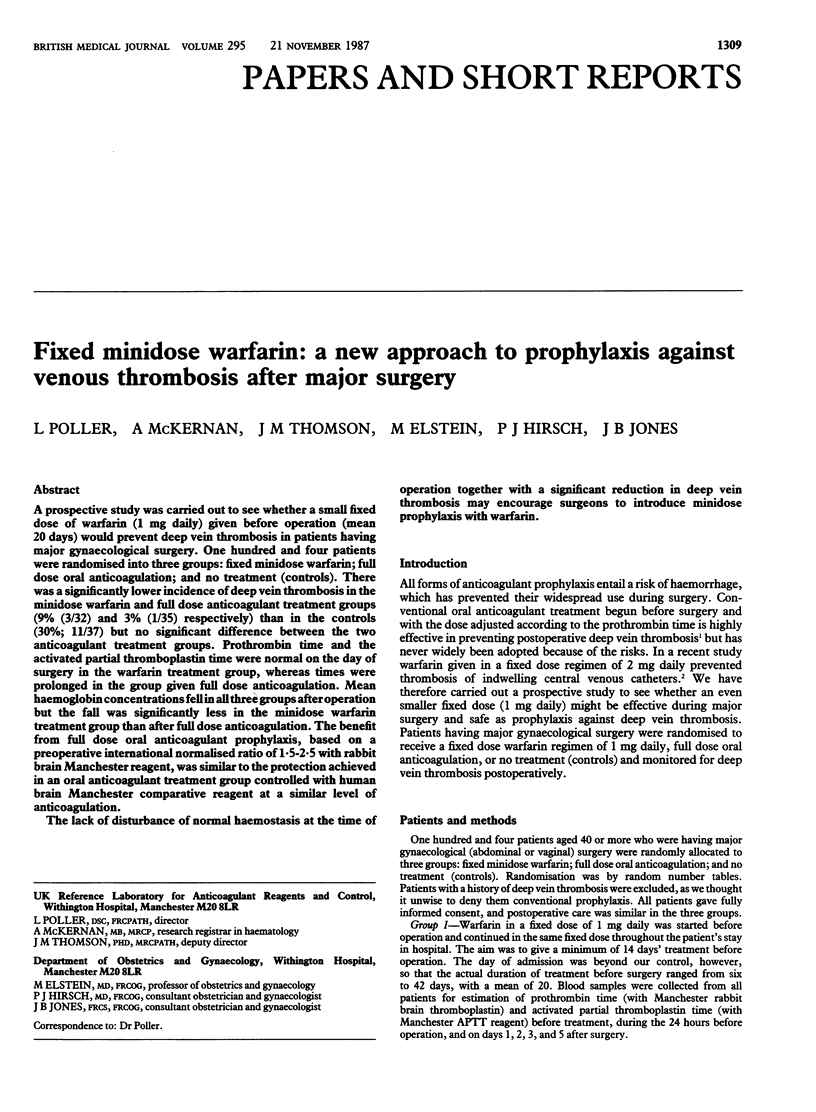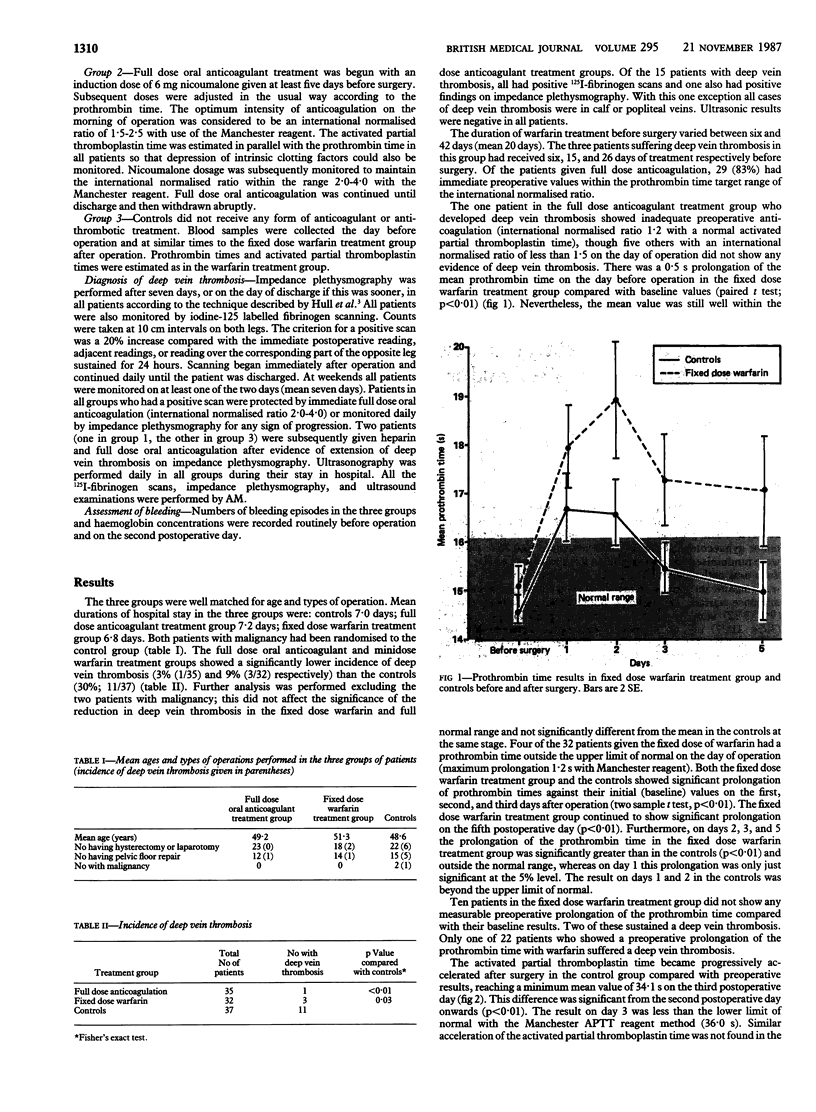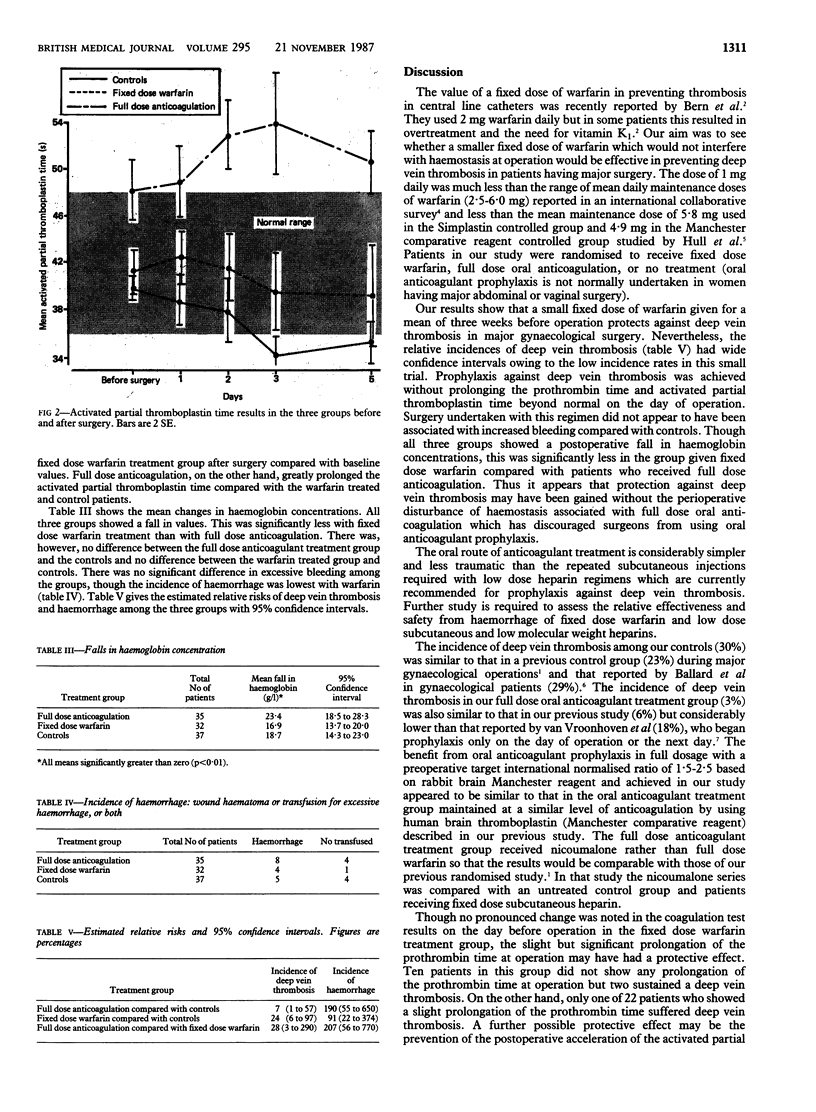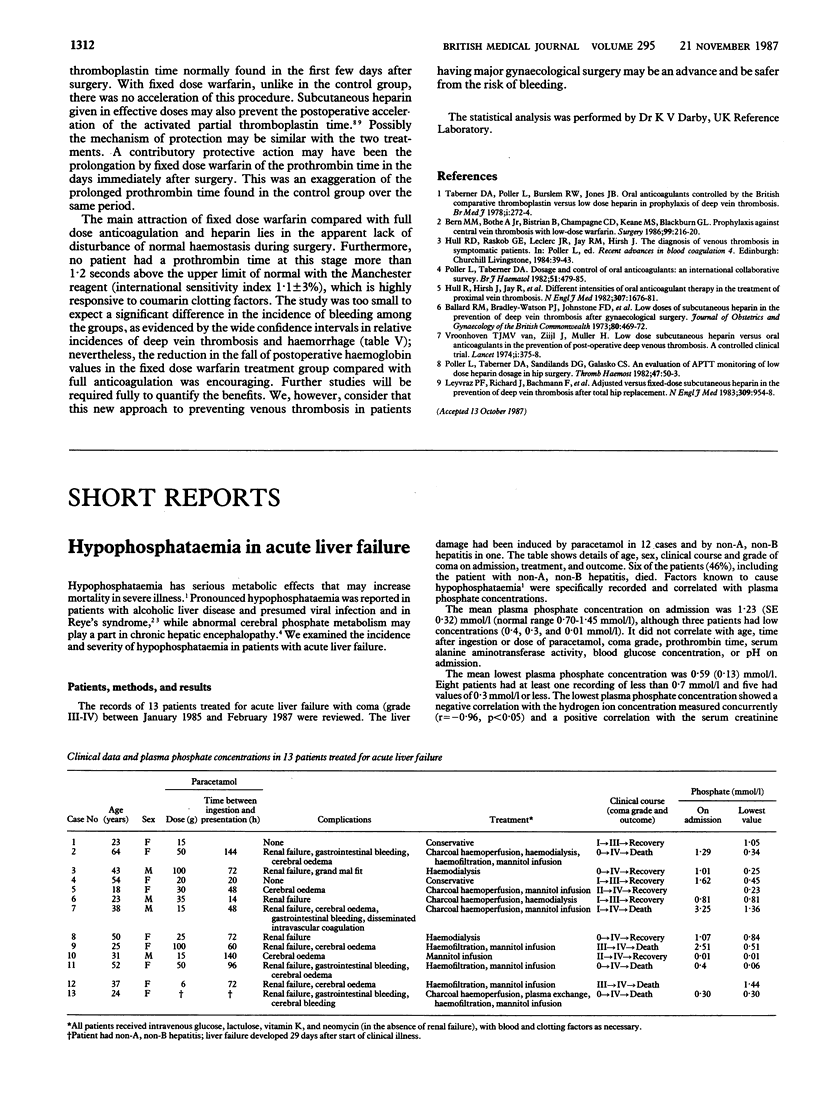Abstract
A prospective study was carried out to see whether a small fixed dose of warfarin (1 mg daily) given before operation (mean 20 days) would prevent deep vein thrombosis in patients having major gynaecological surgery. One hundred and four patients were randomised into three groups: fixed minidose warfarin; full dose oral anticoagulation; and no treatment (controls). There was a significantly lower incidence of deep vein thrombosis in the minidose warfarin and full dose anticoagulant treatment groups (9% (3/32) and 3% (1/35) respectively) than in the controls (30%; 11/37) but no significant difference between the two anticoagulant treatment groups. Prothrombin time and the activated partial thromboplastin time were normal on the day of surgery in the warfarin treatment group, whereas times were prolonged in the group given full dose anticoagulation. Mean haemoglobin concentrations fell in all three groups after operation but the fall was significantly less in the minidose warfarin treatment group than after full dose anticoagulation. The benefit from full dose oral anticoagulant prophylaxis, based on a preoperative international normalised ratio of 1.5-2.5 with rabbit brain Manchester reagent, was similar to the protection achieved in an oral anticoagulant treatment group controlled with human brain Manchester comparative reagent at a similar level of anticoagulation. The lack of disturbance of normal haemostasis at the time of operation together with a significant reduction in deep vein thrombosis may encourage surgeons to introduce minidose prophylaxis with warfarin.
Full text
PDF



Images in this article
Selected References
These references are in PubMed. This may not be the complete list of references from this article.
- Ballard R. M., Bradley-Watson P. J., Johnstone F. D., Kenney A., McCarthy T. G. Low doses of subcutaneous heparin in the prevention of deep vein thrombosis after gynaecological surgery. J Obstet Gynaecol Br Commonw. 1973 May;80(5):469–472. doi: 10.1111/j.1471-0528.1973.tb15963.x. [DOI] [PubMed] [Google Scholar]
- Bern M. M., Bothe A., Jr, Bistrian B., Champagne C. D., Keane M. S., Blackburn G. L. Prophylaxis against central vein thrombosis with low-dose warfarin. Surgery. 1986 Feb;99(2):216–221. [PubMed] [Google Scholar]
- Hull R., Hirsh J., Jay R., Carter C., England C., Gent M., Turpie A. G., McLoughlin D., Dodd P., Thomas M. Different intensities of oral anticoagulant therapy in the treatment of proximal-vein thrombosis. N Engl J Med. 1982 Dec 30;307(27):1676–1681. doi: 10.1056/NEJM198212303072704. [DOI] [PubMed] [Google Scholar]
- Leyvraz P. F., Richard J., Bachmann F., Van Melle G., Treyvaud J. M., Livio J. J., Candardjis G. Adjusted versus fixed-dose subcutaneous heparin in the prevention of deep-vein thrombosis after total hip replacement. N Engl J Med. 1983 Oct 20;309(16):954–958. doi: 10.1056/NEJM198310203091605. [DOI] [PubMed] [Google Scholar]
- Poller L., Taberner D. A. Dosage and control of oral anticoagulants: an international collaborative survey. Br J Haematol. 1982 Jul;51(3):479–485. doi: 10.1111/j.1365-2141.1982.tb02805.x. [DOI] [PubMed] [Google Scholar]
- Poller L., Taberner D. A., Sandilands D. G., Galasko C. S. An evaluation of APTT monitoring of low-dose heparin dosage in hip surgery. Thromb Haemost. 1982 Feb 26;47(1):50–53. [PubMed] [Google Scholar]
- van Vroonhoven T. J., van Zijl J., Muller H. Low-dose subcutaneous heparin versus oral anticoagulants in the prevention of postoperative deep-venous thrombosis. A controlled clinical trial. Lancet. 1974 Mar 9;1(7854):375–378. doi: 10.1016/s0140-6736(74)93147-x. [DOI] [PubMed] [Google Scholar]




